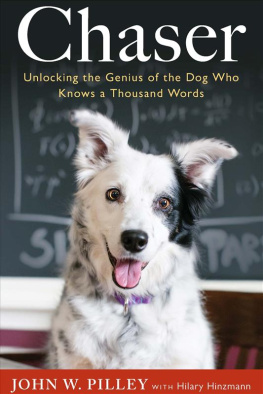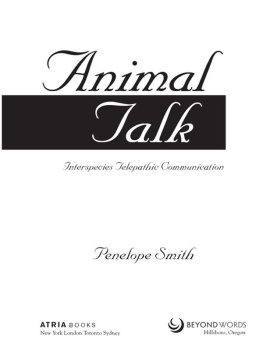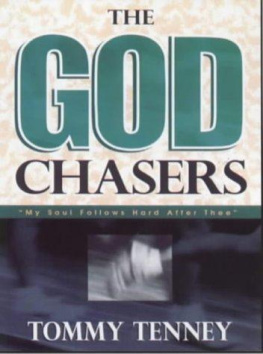Copyright 2013 by John W. Pilley, Jr.
All rights reserved
For information about permission to reproduce selections from this book, write to Permissions, Houghton Mifflin Harcourt Publishing Company, 215 Park Avenue South, New York, New York 10003.
www.hmhco.com
Library of Congress Cataloging-in-Publication Data is available.
ISBN 978-0-544-10257-6
e ISBN 978-0-544-10243-9
v1.1013
To Sally
There are some simple truths... and the dogs know what they are.
Joseph Duemer, A Dogs Book of Truths
The Dog Who Knows a Thousand Words
T HE TWENTY OR SO nine-year-old boys and girls squirmed and murmured in their seats as Chaser walked into their fourth grade classroom at Public School 31 in Brooklyn.
Shes here!
She looks bigger on TV.
Shes so cute!
The childrens desks were pushed to the back and sides of the room, positioned so they all had a good view of the space that had been cleared at the front of the classroom.
I let Chaser off the leash and she went straight to my grandson, Aidan, who was sitting at one end of the first row with a giant smile plastered on his face.
Aidan had been begging us to bring Chaser to visit his class. He had told his teacher, Mrs. Tapper, about our visit to New York for several national television appearances, and most of the class had watched Chaser demonstrate her unprecedented language skills on Nova scienceNow a few days before. Now here we were, about to present those skills in person.
After greeting Aidan, Chaser moved on to the other children, looking up at each one expectantly and wagging her tail. As Aidans classmates leaned down to pet Chaser, her tail wagged harder and her tongue lolled out of her mouth in an ecstatic canine grin.
Chaser is not an imposing dog physically. Shes normal Border collie size, about twenty inches tall at the shoulder and about forty pounds. Her thick, fluffy coat is mostly white with splotches of gray and flecks of black, except for large patches of black on the left side of her head, both sides of her torso, and her hind legs. Although she has plenty of spirit, overall she has a soft temperament. I often tell people, Shes a lover, not a fighter.
All the same, a few children were a little shy about touching Chaser. Any dog can be intimidating for people who arent used to them. Chaser has lots of experience with children, however. She knows that theyre the best possible candidates for her favorite activity, play. She wiggled and squirmed and wagged her tail appealingly in front of the shier kids, and soon even the most reluctant children were grinning right back at her.
It was time to begin. We only had an hour and there was a lot to show. The principal, Mrs. Scarlato, went and stood in the back of the classroom with her camera, and Mrs. Tapper introduced my wife, Sally, our daughter (and Aidans mom) Debbie, and me to the class. Then I called Chaser to me and she lay down at my feet.
Im Dr. Pilley, I told the children, and Im a scientist. Can anyone tell me what scientists do?
One boys hand shot up, and I pointed to him. Scientists invent things, he said. Another offered, They look at stars and rocks and stuff like that. And a girl said, They study plants and animals, too.
I asked, Why do scientists study things like rocks and stars and oceans and plants and animals? What are they looking for?
Another girl said, They want to discover things.
Aha, thats it! Thats what we scientists are after, discovery! Chaser and I have been trying to discover how much human language she can learn. I see Chaser as a co-investigator and research assistant rather than as an experimental subject. Just as shes a part of our family, shes also the other half of my research team. I understand youve heard that Chaser knows more than a thousand words.
Over the previous few weeks there had been headlines around the world about Chaser. It all began just before Christmas, with the e-publication of a peer-reviewed scientific article on my research with Chaser. Id written it with the help of Alliston Reid, a former student of mine at Wofford College in Spartanburg, South Carolina, where he had succeeded me as a professor of psychology.
The article, published first online and later in print by the British journal Behavioural Processes, reported that Chaser had learned and retained the proper noun names of 1,022 objects over a period of three years. She had also learned to understand and distinguish the separate meanings of proper noun names and commands, and had learned at least three common nouns, or words that represent whole categories of things. Furthermore, she could learn a new word by exclusion, meaning that she could infer the relationship between a name she had never heard before and an object she had never seen before, by picking the new object out of a group of objects whose names she already knew. These abilities are normally seen in children when they are acquiring language as toddlers, and there is fierce debate among scientists as to whether animals can really do the same things.
On December 8, 2010, the day the article was published online, I received a phone call from a journalist for the British magazine the New Scientist. Two weeks later, the online edition of the New Scientist ran a story with the headline Border Collie Takes Record for Biggest Vocabulary. Our phone started ringing off the hook and my e-mail inbox began filling up with messages from print, online, and broadcast media. Over the week from Christmas to New Years the Chaser story went viral, as Debbies husband, Jay, explained it to me.
In more than forty-six languages, the headlines ran the gamut from silly to serious. The NationalExaminer put Chaser on the cover next to Brad Pitt and Charlie Sheen. Most of the media attention centered on Chasers knowing more than a thousand words, which MSNBC noted is more than most toddlers know. There was also lots of speculation about whether Chaser was the worlds smartest dog.
So far as its been documented, I told the class, Chaser knows more words than any other dog. In fact, she knows more words than any other animal except humans. Were going to demonstrate Chasers learning of words for you in a minute. But first I want to show you some learning that she shares with a lot of Border collies.
I opened the plastic bin wed brought with us and showed the children what was inside: twenty of Chasers toys, mostly stuffed animals and dolls, but also balls and Frisbees (our word for any spinning disk toy). Each one had a name written on it in permanent ink, like Bamboozel, Frat Rat, Bear, Crock, SpongeBob, ABC, Prancer, and Santa Claus. Among the rest of her toys at home there was more than one teddy bear, but the other bears had unique names with no repeats. That made it possible for Chaser to keep them straight in her head.
I put one of the toys, a foam Frisbee with Flipflopper written on it, down on the floor about eight feet away from Chaser. She had her head down as if she had no interest in what I was doing. Only experience told me that she was giving an eye to the sheep and an ear to the farmer, as Border collie trainers say. Flipflopper was one of Chasers flock of named toys, one of the 1,022 surrogate sheep she has acquired in her language training. Any activity to do with Flipflopper was important to her.
With her ears down and her eyes half closed, Chaser looked like she was in a trance state, as more than one journalist has described her in these moments. But she had her legs and feet drawn under her evenly on both sides. That was the one telltale sign that she was ready to spring into action as soon as I spoke the words that told her what I wanted her to do.
Chaser, go out, I said, using the words that sheep farmers have traditionally used to start their dogs toward some sheep.
Next page





